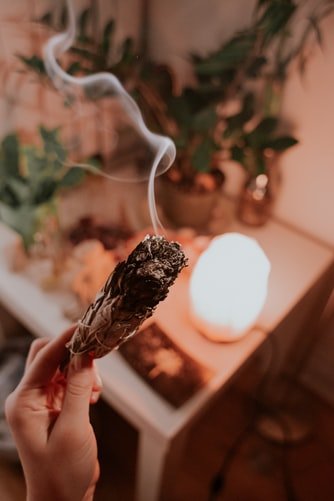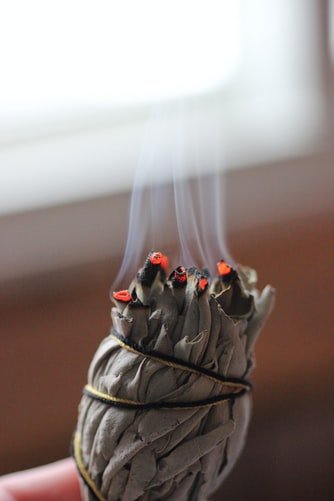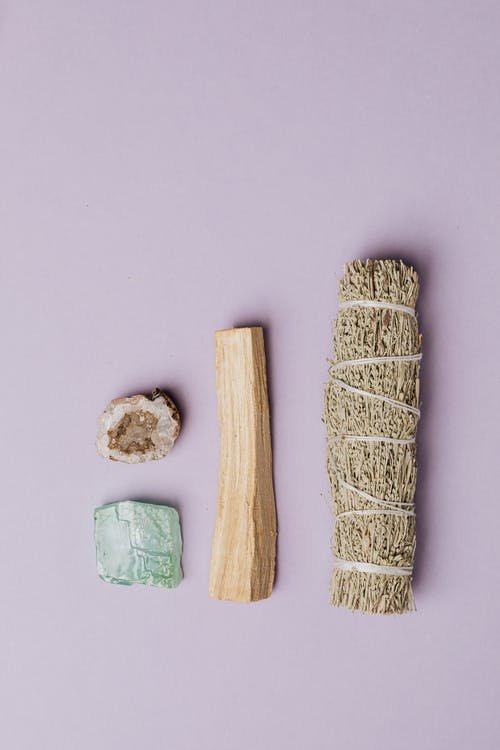
Muchas veces utilizamos hierbas de diversas formas para poder aprovechar sus beneficios para nuestra salud así como té, jarabes, infusiones y cápsulas.
Many times we use herbs in different ways to be able to take advantage of their benefits for our health as well as tea, syrups, infusions and capsules.
La aromaterapia se ha convertido en un término de moda utilizado en cuanto a bienestar se trata.
Aromatherapy has become a buzzword used when it comes to wellness.
Antes de que pudiéramos tener la tecnología para destilar el almizcle de las plantas y convertirlos en aceites aromáticos, podríamos decir que nuestra primera experiencia con aromaterapia fue sintiendo el aroma de las plantas por la mañana, esto nos da un excelente ánimo además de equilibrar nuestra vibración con la naturaleza
Before we could have the technology to distill the musk from the plants and convert it into aromatic oils, we could say that our first experience with aromatherapy was feeling the aroma of the plants in the morning, this gives us an excellent mood in addition to balancing our vibration with nature
Existen muchas recetas para hacer inciensos caseros. Aunque algunos ingredientes pueden ser difíciles de conseguir. Sin embargo,
Te enseñaremos una técnica llamada “Atado de Hierbas” que además de ser ecológicos es sencillo de hacer.
Para hacer un incienso natural con plantas necesitarás los siguientes materiales:

There are many recipes for making homemade incense. Although some ingredients can be difficult to get. However, we will teach you a technique called "Herb Tying" that besides being organic is easy to do.
To make a natural incense with plants you will need the following materials:
-Plantas aromáticas (Menta, Mirra, Rosa, Lavanda, Artemisa o Salvia)
-Un cordón de fibra 100% natural (puede ser algodón o yute).
Tijeras
-Un incensario, sahumador o un cuenco de cerámica o metal.
PROCEDIMIENTO:

-Aromatic plants (Mint, Myrrh, Rose, Lavender, Mugwort or Sage)
-A 100% natural fiber cord (can be cotton or jute).
Scissors
-A censer, smoker or a ceramic or metal bowl
PROCEDURE
Antes de recolectar las hierbas que usarás piensa en qué tipo de aromas te gustan y qué beneficios te gustaría conseguir.
Por ejemplo, la menta aumenta la energía y es considerado un estimulante mental, la lavanda regula las emociones y disminuye la ansiedad y la depresión. Si quieres algo de limpieza y protección puedes utilizar el Romero, que también ayuda a las buenas relaciones y a la relajación.
Before picking the herbs you will use, think about what kind of aromas you like and what benefits you would like to achieve.
For example, mint increases energy and is considered a mental stimulant, lavender regulates emotions and decreases anxiety and depression. If you want some cleanliness and protection you can use Rosemary, which also helps good relationships and relaxation.
Una vez seleccionadas y cortadas las hierbas o flores, empieza cuidadosamente a juntar las ramitas capa a capa, colocando en la base las hojas más grandes, procura que los tallos estén al mismo nivel para que al ensamblarlo sea más sencillo.
Once the herbs or flowers have been selected and cut, carefully begin to gather the twigs layer by layer, placing the largest leaves at the base, making sure that the stems are at the same level so that it is easier to assemble.
Corta un trozo del cordón que sea 4 veces más largo que “atado de hierbas”. Haz un nudo simple en uno de los extremos del cordón y apriétalo alrededor de los tallos uniendo las ramas de manera compacta.
Cut a piece of the cord that is 4 times longer than the "herb bundle". Tie a simple knot at one end of the cord and tighten it around the stems, joining the branches together in a compact way.
Con el sobrante del hilo comienza a envolver las ramas firmemente en espiral hacia la parte superior del ramillete. Mientras vas enlazando, se van acomodando y doblando las ramas sueltas y metiéndolas debajo del cordón y se a entrecruzando el hilo mientras se regresa a la base. Hasta que quede un nudo suelto en la base y se ata a la base.
With the remaining thread, it begins to wrap the branches firmly in a spiral towards the top of the corsage. As you wrap, you will settle and bend the loose branches and tuck them under the cord and crisscross the thread as you return to the base. Until there is a loose knot at the base and it is tied to the base.
El ramo se deja secar de 15 a 20 días y una vez seco ya están listos para sahumar.
The bouquet is left to dry for 15 to 20 days and once it is dry it is ready for incineration
Puedes hacer atados de una sola hierba o hacer combinaciones entre ellas, aunque según las antiguas creencias es recomendable hacer el atado con un número de hierbas impares (3, 5,7). Estos números tienen relación con nuestra parte espiritual que potenciará la energía de las plantas al ser sahumadas.
You can make bindings from a single herb or make combinations between them, although according to ancient beliefs it is advisable to make the bundle with an odd number of herbs (3, 5, 7). These numbers are related to our spiritual part that will enhance the energy of the plants when they are smoked.
¡Muy importante!
No olvides pedir permiso a la naturaleza para cortar las ramas. Ya sabes cómo preparar el atado de hierbas, mezcla las de tu preferencia, ten presente las propiedades de las plantas y su creatividad.

Very important!
Don't forget to ask nature's permission to cut the branches. You already know how to prepare the bundle of herbs, mix those of your preference, keep in mind the properties of the plants and their creativity.
Traduccion:https://www.deepl.com/
Fuente de imagenes: https://www.pexels.com/
https://unsplash.com/s/photos/incense